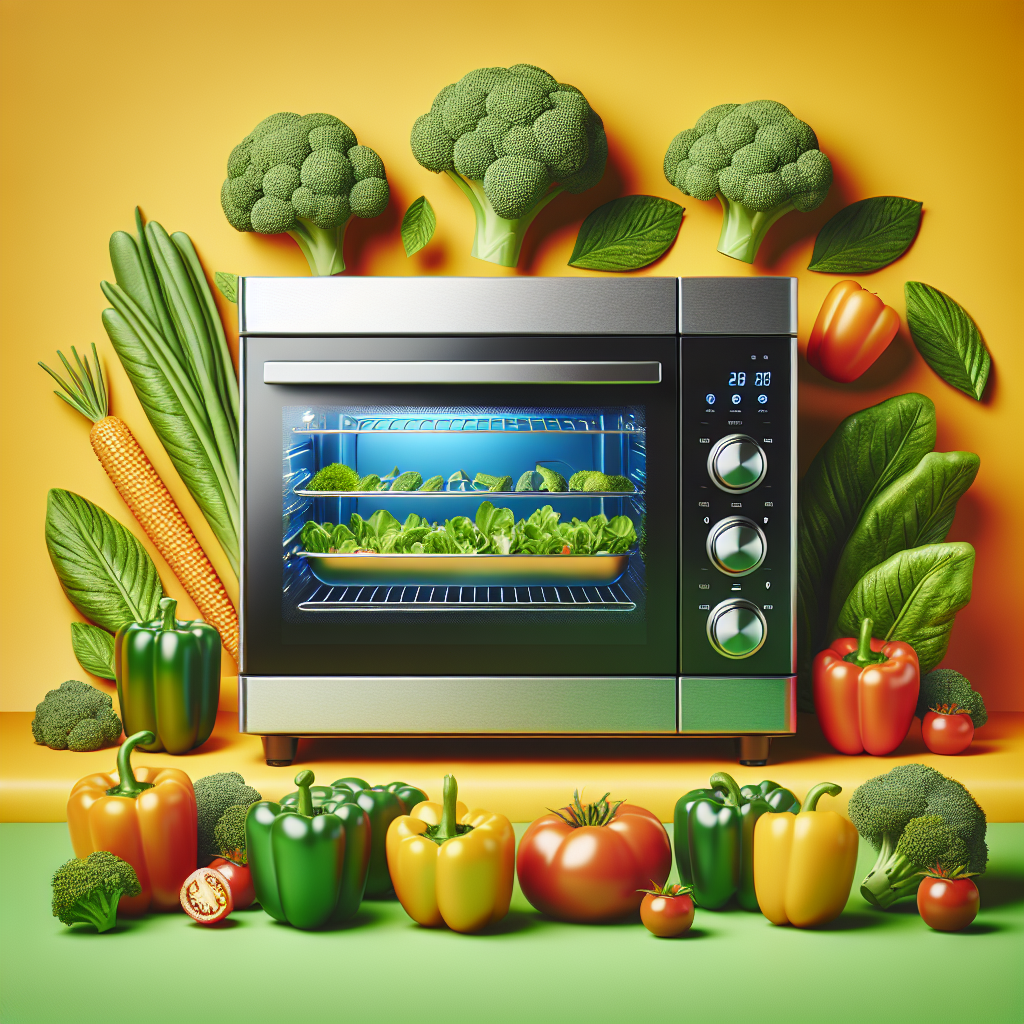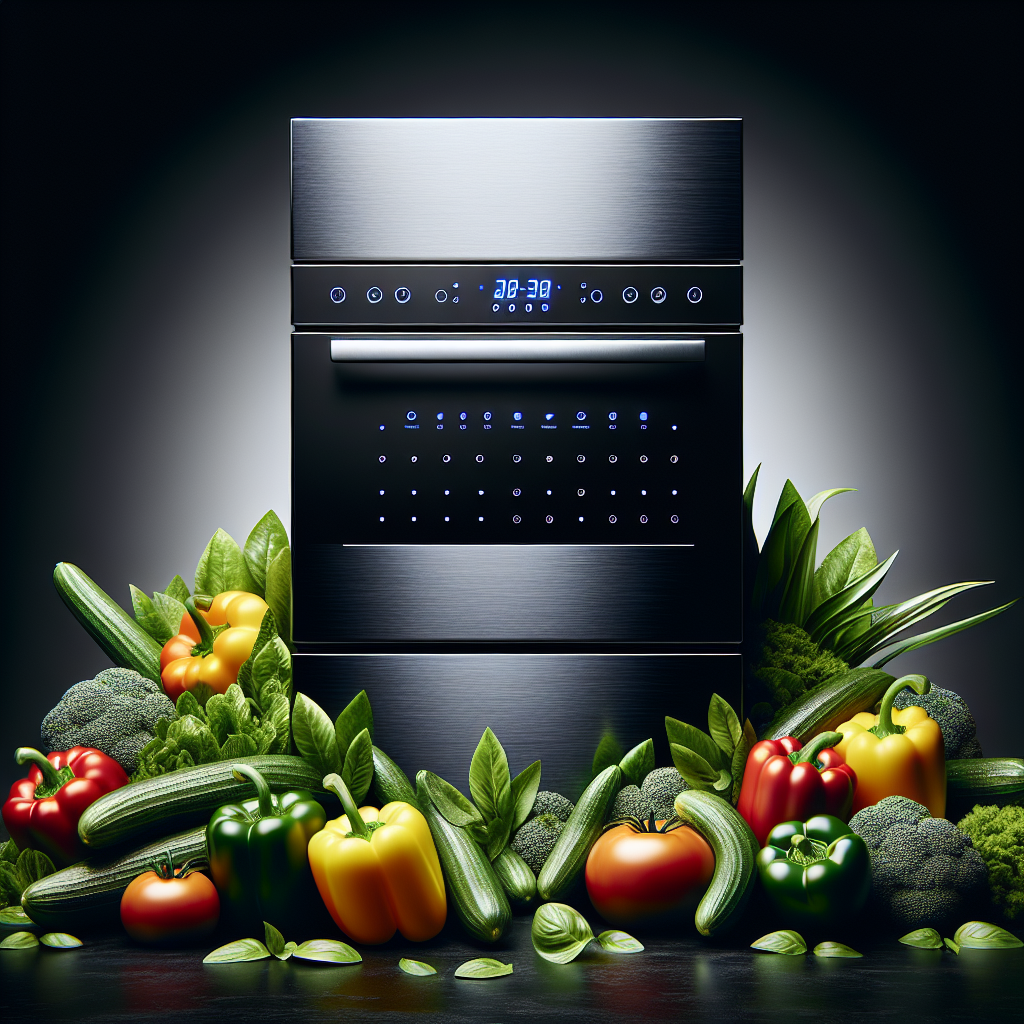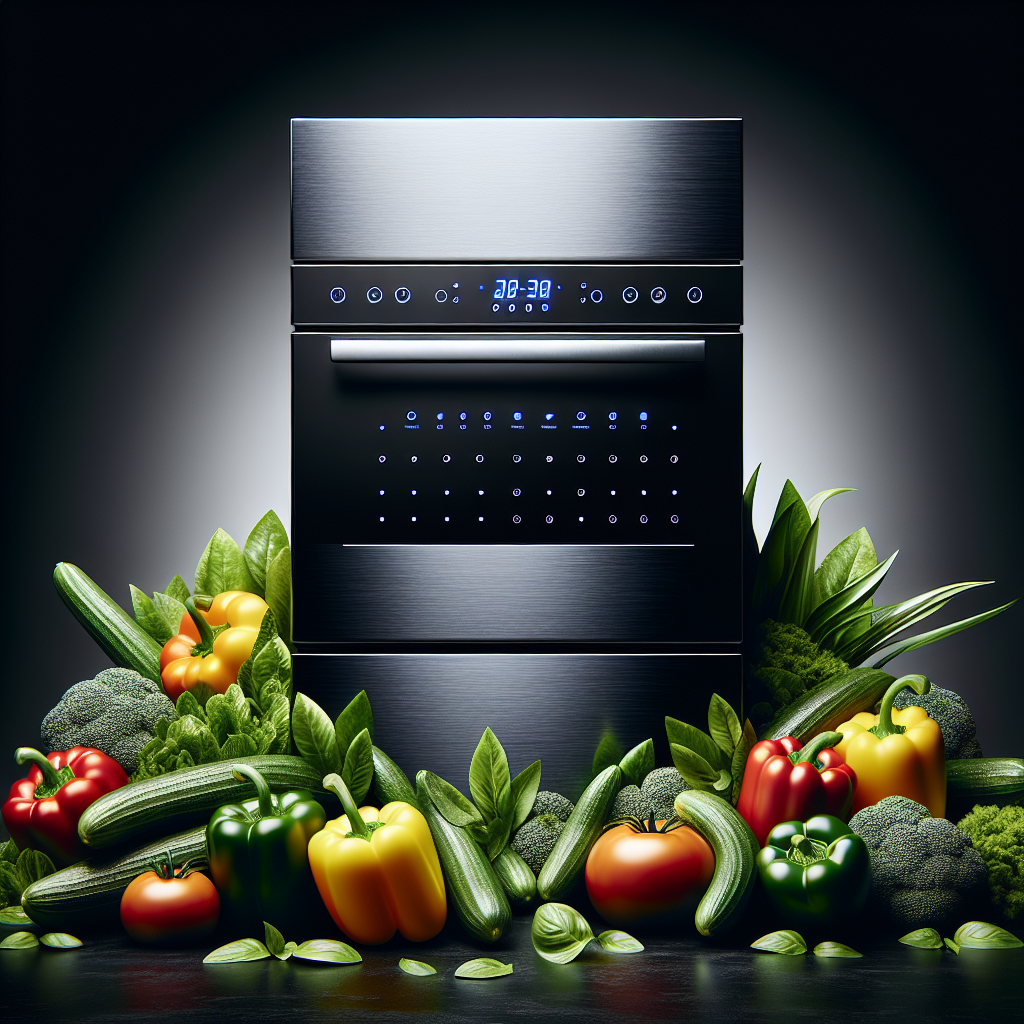You’re about to get your kitchen game on a whole new level with “Preserving Nutrients: Smart Oven Cooking Tips.” Imagine sinking your teeth into a meal that’s not only mouthwateringly delicious but also packed to the brim with nutrition. Cooking can sometimes be a delicate dance with temperatures and techniques, but who says you can’t lead? From the convection prowess of a Breville Smart Oven to the precise temperature control of a Wolf Gourmet Countertop Oven, we’re spilling the beans on how you can keep those vitamins and minerals right where they belong—in your food. Get ready to unlock the secrets of keeping your dishes tantalizingly tasty and wholesomely healthy, all with a little help from your trusty oven.
Understanding the Basics of Nutrient Retention
Nutrient retention is like holding onto the good stuff in your food. When you cook, it’s not just about making your meal hot and tasty; it’s also about keeping as many of the vitamins, minerals, and other beneficial compounds in the food as possible. This isn’t always straightforward, since some methods of cooking can cause nutrients to break down or leach out.
The Science of Cooking and Nutrient Preservation
Here’s the deal: heat can be both friend and foe. It can help release some nutrients that your body would struggle to get from raw foods, like lycopene from tomatoes. But heat can also degrade vitamins like C and B, as well as compounds like antioxidants. The key is understanding how different cooking methods affect these nutrients.
Key Nutrients Sensitive to Heat and Cooking Methods
You’ve heard about vitamin C in oranges and that it’s sensitive to heat, right? Well, that’s just the tip of the iceberg. Many B vitamins, as well as vitamin A, D, E, and K, can also take a hit from too much heat. And let’s not forget about the minerals—like potassium, magnesium, and calcium—which might leach out if you’re not careful with your cooking methods.
How Ovens Affect the Nutritional Profile of Foods
Your oven is like a big warm hug for your food. But sometimes, it hugs a little too tight and squeezes some of the nutrients out. When you’re roasting or baking, some vitamins might not survive the extended exposure to heat. The good news is there are ways to make your oven a nutrient-preserving machine, and you’re about to find out how.
Selecting the Right Cookware
Cookware can be your secret weapon in the fight to preserve nutrients. The materials and surfaces of the pots and pans you use can affect the cooking process and, ultimately, the nutritional value of the food.
Material Considerations for Nutrient Preservation
When it comes to holding onto those nutrients, you’ll want to pick your cookware like you pick your friends—wisely. Some materials, like uncoated stainless steel or cast iron, can withstand higher heats without leaching harmful substances into your food. Others, like silicone or glass, are inert, meaning they don’t react with your food at all.
Recommended Brands and Products for Healthier Cooking
So, you’re probably wondering what brands to invite into your kitchen. Well, All-Clad’s stainless steel cookware is a solid choice for durability and even heating. Le Creuset offers top-notch cast iron that’s not only good for your food but also a feast for the eyes with their vibrant colors. For safe non-stick options, Scanpan and GreenPan use ceramic coatings that can handle the heat without releasing toxins.
The Impact of Cookware Surface on Cooking Efficiency
A smooth surface cookware, like that found on quality ceramic non-stick pans, means less need for oils, and consequently, better heat transfer. On the flip side, rough surfaces can cause uneven cooking and potential overcooking, leading to a decrease in those precious nutrients.

Optimizing Oven Settings for Nutrient Preservation
Your oven has a variety of settings and modes, and knowing how to use them can make all the difference in preserving the nutrients in your food.
Understanding Your Oven’s Temperature Controls
Your oven’s temperature controls aren’t there just to look fancy—they’re precision tools. Lower temperatures for longer times can often preserve more nutrients than blasting your food with high heat. A slow and steady approach might just win the nutrient race.
The Role of Convection in Preserving Food Quality
Convection ovens, with their built-in fans, work by circulating hot air around your food, cooking everything evenly and at a lower temperature. This can help preserve nutrients by reducing hotspots that can cause overcooking.
Smart Use of Oven Modes and Features
Your oven’s various modes, like broil, roast, or bake, can be tailored to the type of food you’re cooking. using these features intelligently can help maximize nutrient retention. For example, choosing to roast vegetables instead of boiling them helps keep those minerals from drowning in water.
Pre-Cooking Techniques to Enhance Nutrient Retention
There are some sneaky tricks you can use before your food even hits the oven to help seal in those nutrients.
The Benefits of Blanching
Blanching is like a quick dip in a hot bath for your veggies. Dunk them in boiling water for a short period, then into ice water to stop the cooking. This can help to brighten the color, retain nutrients, and reduce the cooking time needed in the oven.
Marinating for Flavor and Health
Marinating your meats and veggies isn’t just about packing in flavor. It can also add an extra layer of protection against nutrient loss, as the marinade can help preserve moisture and reduce the time needed to cook.
Pre-Roasting Tactics to Lock in Nutrients
A little pre-roasting can go a long way. Roasting nuts and seeds before adding them to your dish can help protect their oils and the vitamins within. Just keep an eye on them—these little guys can go from perfectly toasted to burnt very quickly.

Timing Is Everything: Duration of Cooking
How long you cook your food can be just as important as how you cook it.
How Overcooking Affects Nutrient Density
We’ve all been there—you leave the carrots in the oven a little too long, and they turn to mush. Overcooking doesn’t just affect texture; it can dramatically reduce nutrient content, especially with sensitive vitamins.
Determining the Optimum Cooking Times for Various Foods
Some general rules: veggies are usually best with a quick roast, while meats might need longer to ensure they’re safe to eat but try not to take them beyond that point. Your oven’s manual and plenty of online resources can help you get the timing just right.
Using Timers and Smart Ovens to Avoid Nutrient Loss
Thankfully, you don’t have to stand guard with a stopwatch. Most ovens come with timers, and some even have fancy smart features that can shut off the heat automatically. These tech assists are great for preventing those nutrient-zapping overcooking moments.
The Role of Temperature Probes and Thermometers
A temperature probe is like having a secret agent inside your food, giving you the lowdown on when it’s perfectly cooked.
Monitoring Internal Temperature for Perfectly Cooked Meals
By checking the internal temperature of your meats and fish, you can make sure they’re cooked just right—not too little, not too much—making sure you preserve as many nutrients as possible and ensuring food safety.
Smart Technology Integration for Precision Cooking
Nowadays, some ovens come with built-in temperature probes that sync with the oven’s controls. They can adjust the temperature or turn off the oven when your food hits that sweet spot, all without you lifting a finger.
Recommended Temperature Probes for Health-Conscious Cooks
Go for a probe with a good reputation for accuracy, like those from ThermoPro or the iGrill series. With precise readings, you’ll be the master of nutrient retention in no time.
Steaming in the Oven for Nutrient Preservation
Steaming is a superhero when it comes to keeping nutrients in your food. And guess what? Your oven can be turned into a steaming machine.
Steam Cooking Benefits Over Dry-Heat Methods
Steaming uses moist heat, which is less likely to break down vitamins than dry-heat methods like roasting or baking. Plus, since the food isn’t submerged in water, there’s no risk of nutrients going down the drain.
How to Steam in an Oven Effectively
You can achieve this by adding a tray of water beneath your cooking rack or using a special oven-safe steaming dish. Some advanced ovens come with a steam function already built-in.
Best Practices for Oven Steaming
Keep an eye on the water level, ensuring there’s always enough to create steam, but not so much that your food is swimming. Also, be sure to cover your food with foil or a lid to keep the steam close to the food, enhancing the cooking process and nutrient retention.
Incorporating Foil and Parchment Paper
These kitchen staples are your allies in the quest to hold onto those nutrients.
Creating Moisture Barriers to Retain Nutrients
By wrapping foods in foil or parchment paper, you create a self-basting environment, trapping moisture and cooking your food gently. This can prevent the loss of water-soluble vitamins.
Balancing Wrapped and Unwrapped Cooking
Sometimes you want that crispy exterior, and sometimes you don’t. Knowing when to wrap and when to leave your food exposed can affect not just the texture but also how much nutritional goodness you’re serving up.
Health and Safety Considerations
It’s crucial to use foil and parchment paper correctly. Avoid letting acidic foods like tomatoes come into contact with aluminum foil to prevent a reaction, and always use parchment paper within its heat tolerance to keep it from burning.
Utilizing Oven Racks and Placement for Even Cooking
The position of your oven racks isn’t arbitrary—it’s strategic.
Positioning Food for Optimal Heat Circulation
Placing your food in the right spot in the oven ensures that it cooks evenly and efficiently. This way, no part gets more heat than the rest, avoiding overcooking and preserving those vitamins and minerals.
The Benefits of Rotating Dishes During Cooking
Giving your dishes a little spin halfway through cooking can help them cook more consistently, further preventing overcooking and allowing for perfect nutrient retention.
How Rack Height Influences Cooking Outcomes
Higher racks are hotter, which can be great for finishing off a dish with a nice brown top. But if you’re trying to prevent vitamin loss, the middle or lower racks often provide a gentler, more even heat.
Exploring Advanced Oven Features for Healthier Cooking
Some ovens are like the smartphones of the kitchen, loaded with features to help you cook smarter.
Smart Ovens and Nutrient-Focused Cooking Programs
Quite a few smart ovens come with pre-programmed settings specifically designed for healthy cooking. They take the guesswork out of cooking times and temperatures, so you can focus on enjoying your food.
Innovative Oven Technologies Worth Investing In
Look out for ovens with features like precise temperature control, steam injection, and moisture sensors. These advancements can make a big difference in nutrient retention. Bosch, Samsung, and Breville are just a few brands that are really pushing the envelope with these kinds of features.
Brands Leading the Way in Healthy Cooking Features
If you’re on the hunt for an oven that has your health in mind, check out brands like Miele and Wolf. They’ve been making waves with their state-of-the-art ovens that are perfect for health-conscious cooks.
In wrapping up, preserving nutrients while using your oven may seem like it requires a bit of science and strategy, but once you get the hang of it, you’ll be dishing out delicious, nutrient-packed meals with ease. Whether you’re steam roasting your fish or baking your veggies with precision, every method you master can lead to a healthier plate. Keep these tips in hand, and happy cooking!

